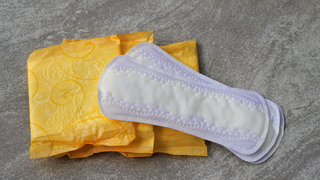In this article:
Understanding Traditional Weaning
Traditional weaning is common in India. Parents start by spoon-feeding mashed or pureed foods at around six months.How it works:
- The parent feeds the baby soft foods like dal water, mashed rice, or fruit puree.
- The baby learns to swallow purees first and gradually moves to thicker textures.
- As coordination improves, finger foods and self-feeding are introduced later.
- Mashed banana
- Rice cereal or suji kheer
- Cooked and mashed vegetables like carrots or sweet potatoes
- Moong dal with ghee
Understanding Baby-Led Weaning (BLW)
Baby-led weaning lets babies feed themselves soft, easy-to-grasp food pieces from about 6 months, rather than being spoon-fed purees.How it works:
- You prepare soft-cooked, baby-safe foods in finger-sized pieces.
- The baby explores food through touch, smell, and taste.
- They learn to chew, swallow, and eat at their own pace.
- Steamed carrot sticks or soft potato chunks
- Slices of ripe mango or papaya
- Soft idli pieces or small roti strips soaked in dal
- Boiled egg yolk (for older babies)
Benefits of Traditional Weaning
Traditionally, weaning can feel more structured and comfortable for new parents. Some of its natural advantages include:- Controlled feeding: You can monitor portion sizes and ensure the baby gets enough nutrition.
- Ease of introduction: Ideal if your baby struggles with chewing early on.
- Lower risk of choking: Pureed foods are easy to swallow.
- Cultural familiarity: Fits well with Indian family routines and traditional diets.
Benefits of Baby-Led Weaning
Baby-led weaning boosts independence and self-regulation. Here are some main benefits:- Improved motor skills: Picking up food and feeding themselves strengthens coordination.
- Healthy eating habits: Babies learn to eat according to hunger, helping them develop intuitive eating patterns.
- Sensory learning: Touching, squishing, and exploring food improves sensory development.
- Inclusion at family meals: Babies join in family dining, observing and learning from others.
Safety Tips for Both Methods
Regardless of which approach you choose, safety is the top priority. Keep these precautions in mind:- Always supervise your baby while eating.
- Avoid hard, round, or sticky foods such as nuts, whole grapes, or raw apple slices.
- Offer food only when your baby can sit upright and hold their head steady.
- Introduce one new food at a time to check for allergies.
- Ensure all foods are well-cooked and cut into safe sizes.
Can You Combine Both?
Many parents find combining both works well. Start with spoon-fed purees and offer soft finger foods too.For example:
- Begin the day with mashed dal rice.
- Offer steamed vegetables or fruit slices at lunch for self-feeding practice.
- Gradually reduce spoon-feeding as your baby becomes confident.
Common Challenges and How to Handle Them
1. Fear of choking:- Offer only age-appropriate, soft foods.
- Know the difference between gagging and choking.
- Use a mat under the high chair.
- Treat mealtime as a fun learning experience rather than a chore.
- Offer a variety, even if some foods are rejected.
- Babies often need multiple exposures to accept new tastes.
- Both methods are valid if the baby is safe, happy, and growing well.
How to Choose What Works for You
When deciding between baby-led and traditional weaning, consider these factors:- Your comfort level: Choose an approach you can follow consistently without stress.
- Baby’s readiness: Check if your baby can sit upright, grasp food, and show interest in eating.
- Time and environment: BLW requires patience and supervision, while TW may suit a busier schedule.
- Health and growth: Consult a paediatrician to ensure your baby’s nutritional needs are met, regardless of the method.
Both baby-led and traditional weaning have their own strengths. Traditional weaning offers comfort and control, while baby-led weaning helps your baby become more independent and confident. The goal is not perfection but progress, helping your baby enjoy food, try new flavours, and develop a healthy relationship with eating.
Whether you use a spoon or soft bites, make mealtimes safe and positive. Your baby will thrive when you trust their pace.
Whether you’re pregnant, a new mom, or navigating postpartum, you don’t have to do it alone. Join our support group to connect, share, and support one another.
FAQs on Understanding Baby-Led Weaning and Traditional Weaning: Finding the Right Feeding Style for Your Baby
- When should I start introducing solid foods to my baby?
Most babies are ready for solids around six months when they can sit upright and show interest in food. Always check with your paediatrician before starting. - Can I start with baby-led weaning even if my baby has no teeth?
Yes. Babies can chew soft foods using their gums. Just ensure the food is soft, well-cooked, and cut into easy-to-grasp pieces. - What if my baby refuses solid food initially?
That’s normal. Babies may take time to adjust to new textures and tastes. Stay patient and keep offering small portions regularly.






